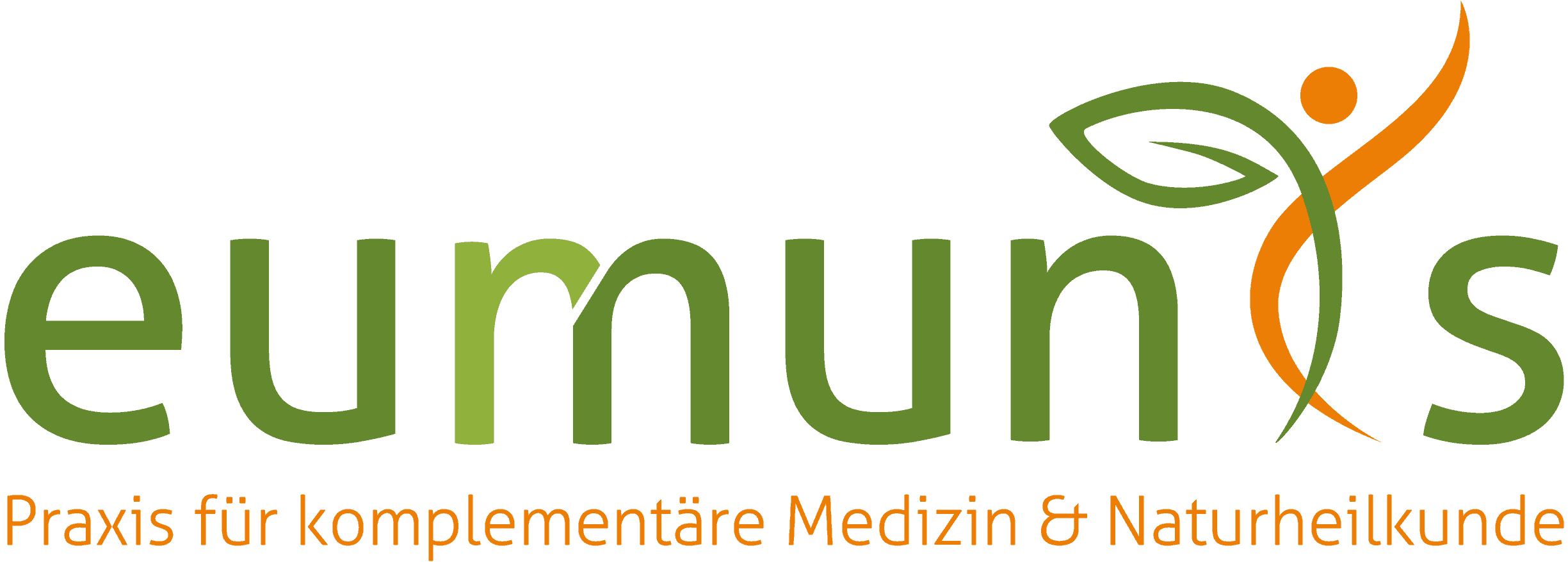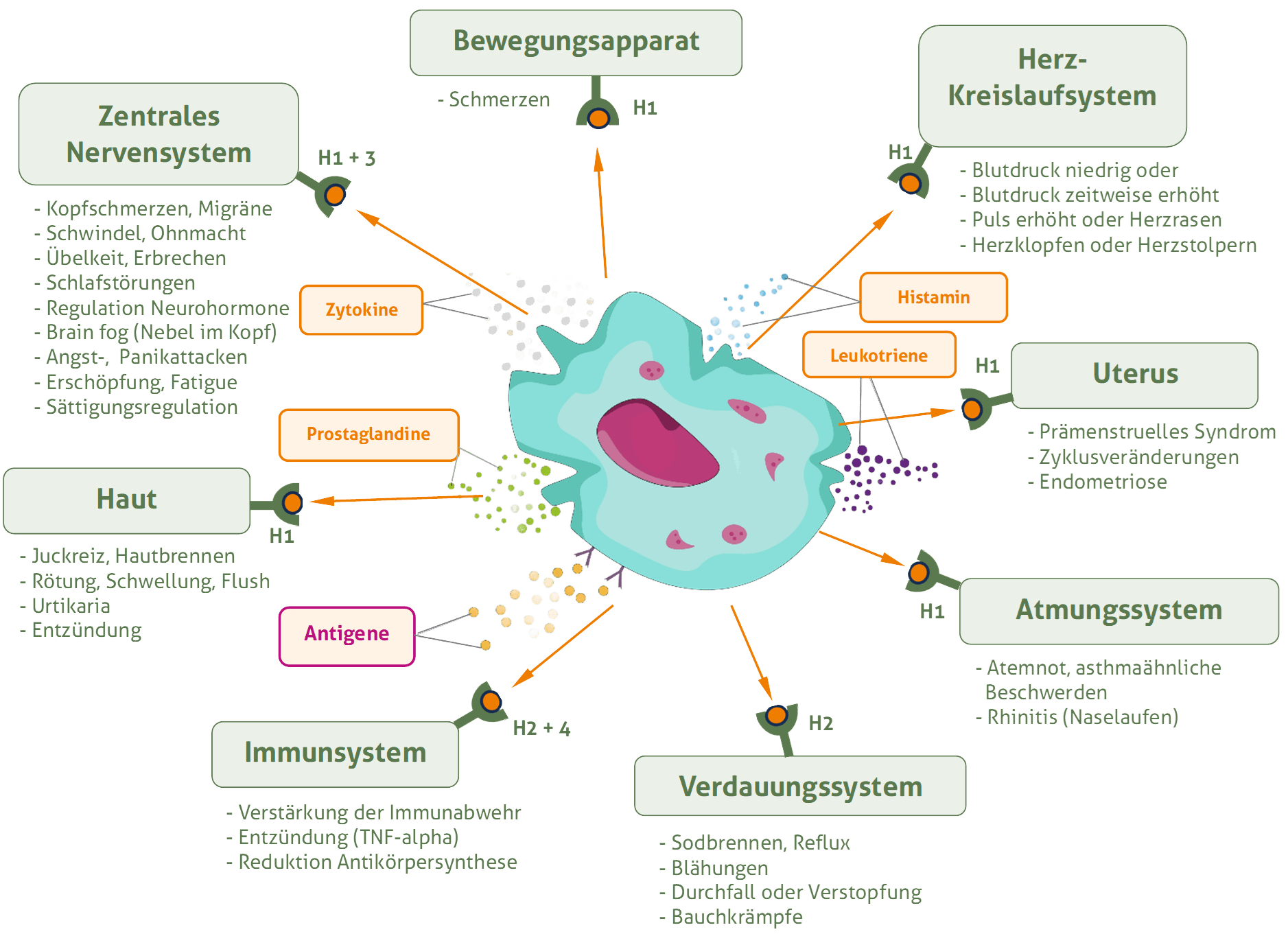The Path to a Correct Diagnosis
Disorders of histamine metabolism are generally referred to as histaminoses. However, this term encompasses various clinical pictures with different underlying causes.
Thus, symptoms can be attributed to impaired histamine breakdown in the blood or intestines, or to increased histamine production. Depending on the cause, we distinguish between histamine intolerance, mastocytosis, and mast cell activation syndrome (MCAS).
The often very unclear symptom patterns are usually not associated with a past infection and frequently lead to a lack of understanding from treating physicians in practice. For this reason, patients are often diagnosed correctly and treated adequately very late (if at all), or are labeled as psychologically unstable and denied any further appropriate help.
In fact, the list of symptoms associated with elevated histamine levels is almost endless, and various combinations of these symptoms can occur.
Mast Cell Activation Syndrome (MCAS)
Mast Cell Activation Syndrome (MCAS) is a serious condition that, depending on its manifestation, significantly limits the quality of life and daily living for most affected individuals. With appropriate therapeutic support and various lifestyle adjustments, many symptoms can be significantly improved, and a good quality of life can be achieved.
For affected individuals, the first and a very important step at this point is to find a treating physician who takes their symptoms seriously and is willing to work with them to find meaningful therapies and solutions.
You can find a list of specialists regarding histaminoses and MCAS here.
Support from naturopathic practitioners can also be very beneficial, provided that appropriate expertise is available.
If you recognize symptoms from the following list, you should consult a specialist to investigate a possible histaminosis:
- Sleep disturbances with regular nocturnal awakenings around 4 AM
- Difficulty falling asleep (restlessness)
- Sweating
- Palpitations or racing heart and intermittent elevated blood pressure
- Sudden anxiety or panic attacks
- Headaches or migraines
- Concentration difficulties, brain fog, fatigue, exhaustion, dizziness
- Constantly runny nose or swollen, watery eyes
- Recurrent bladder infections
- Endometriosis
- Redness, swelling, or itching of the skin
- Reflux or heartburn
- Fibromyalgia
The diagnosis of mast cell activation is often difficult because, on the one hand, the relevant laboratory parameters do not necessarily have to be permanently elevated and may be within the normal range at the time of blood collection. On the other hand, laboratory values are very susceptible to interference, and changes can occur even on the way to the laboratory, leading to false negative results.
In Mast Cell Activation Syndrome, the mast cells that release histamine are very sensitive and can be activated by even minimal stimuli. Mast cell activation means that they release their contents (histamine, prostaglandin, heparin, leukotrienes, inflammatory mediators, etc.), which are then distributed throughout the body within seconds.
From Diagnosis to Therapy
These stimuli that lead to the release of mast cells are called triggers. The first and a very important step in managing life with Mast Cell Activation Syndrome is avoiding these triggers.
The list of possible triggers is as long as the list of possible symptoms and is just as individual. Therefore, understanding one’s very personal triggers is crucial.
Typical triggers include:
- Stress (intentionally listed first)
- Physical exertion
- Hormonal imbalances
- Toxins (via diet, breathing, skin)
- Mold exposure
- Alcohol, smoking, or coffee
- Food (additives, colorings, or preservatives)
- Medications (excipients, additives, and fillers)
- Train and air travel
- and many, many more
As a rule, it is not possible to completely control symptoms solely by avoiding triggers.
Various therapeutic concepts are available. On the one hand, it is sensible to reduce the sensitivity of mast cells and thus stabilize them; on the other hand, it is possible to block histamine receptors and thereby suppress symptoms caused by elevated histamine levels.
For both concepts, both conventional medical and naturopathic therapies are available and are usually used complementarily.
In cases of pronounced Mast Cell Activation Syndrome, it is advisable to build a network of various therapists (conventional medicine, naturopathy, nutritional counseling, psychotherapy, etc.) and to combine various therapies.
It can also be very helpful to connect through various online groups or self-help groups.
In recent years, and especially triggered by a COVID infection (or a COVID-19 vaccination), we are seeing a significant increase in the diagnosis of ‘Mast Cell Activation Syndrome’ (MCAS) in practice today. Affected individuals receive very little to no support in conventional medicine, as this clinical picture is unfamiliar to most physicians. The multitude of symptoms that do not seem to fit together quickly leads to a referral to a psychotherapist.
For this reason, we have specialized in this clinical picture in our practice and have treated many patients with MCAS from all over Germany and beyond in the last four years. The need for education for affected patients is enormous, as the clinical picture is very complex and often requires various therapists to ensure adequate support.
This was also the background why we wrote the “Patient Guide Mast Cell Activation Syndrome (MCAS) – Diagnosis, Therapy, Daily Management” which was published by novum Verlag in March 2025, simply and very clearly explaining the clinical picture, therapy, and diagnosis, and providing many tips for daily living.
You can gladly order this directly from novum Verlag.
Self-help Groups and Online Groups
Self-help

